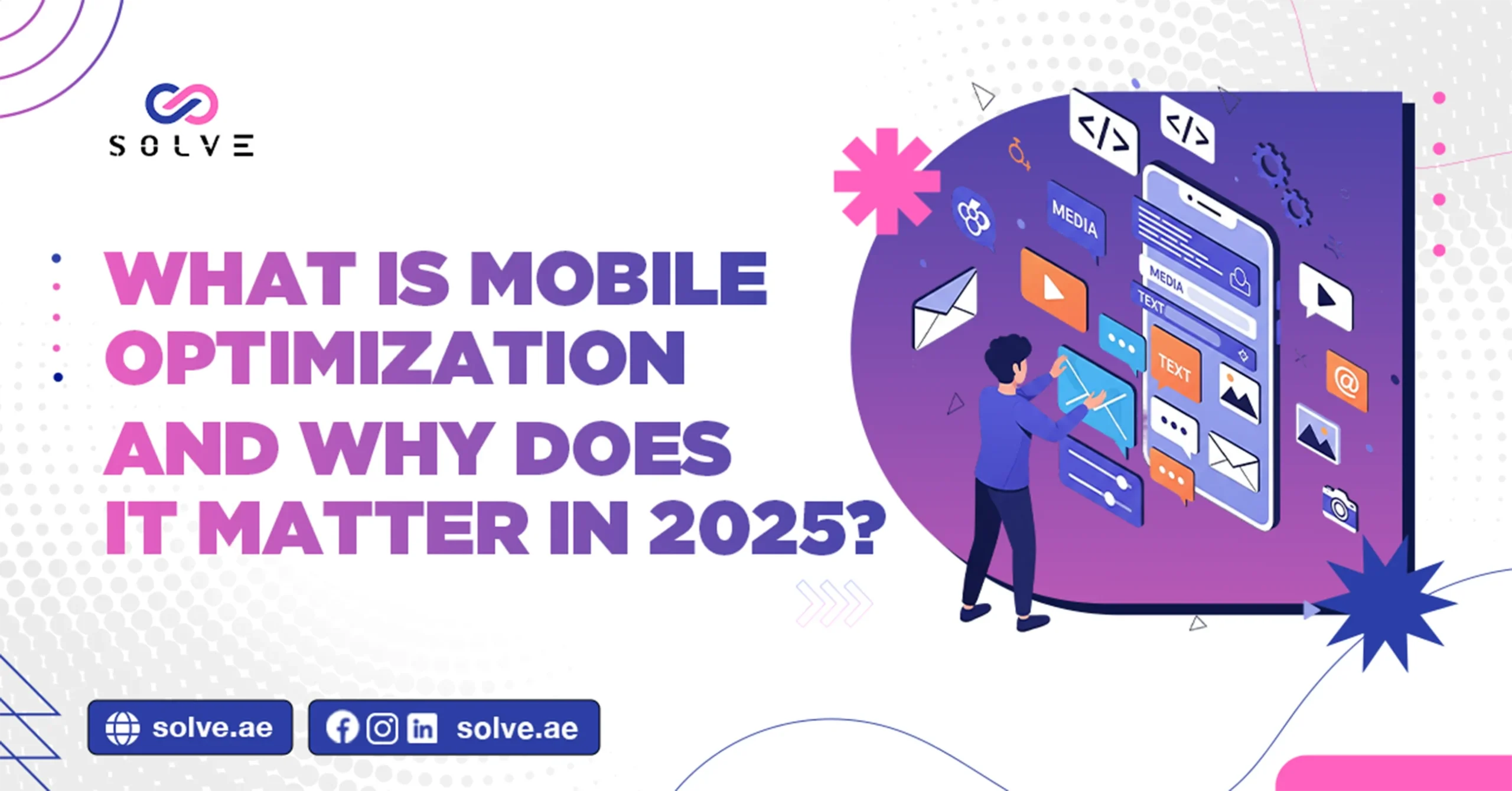- By Vanshika Choudhary
- May 23, 2025
Mobile optimization is all about designing and building a website or an application and improving it so that it works properly on different smartphones and tablets. With more than 80% of web traffic worldwide coming from mobile phones in 2025, it is not just a trend anymore but rather a necessary thing for any business that wants to be relevant and competitive. Since mobile-first indexing and voice search will be the common standards by then, businesses must ensure that their presence on the Internet is fast, friendly, and engaging on every single device. In this blog, we will explain mobile optimization, why it is so important in 2025, and how to best execute it to successfully live in the mobile era.
Why Is Mobile Optimization Important in 2025?
Mobile-First User Behavior
With most internet users now accessing the web from mobile devices, the task of optimizing for mobile has become an utmost priority for businesses of any form or size. With this steady trend in the change in user behavior, websites and applications will require a mobile-first approach in designing layout, navigation, and even content for the smaller screens. Should your website be non-mobile optimized, users would quickly bounce back from the site, thereby increasing your bounce rate, along with losing out on some big prospects in the market. In other words, for any enterprise that does not prioritize mobile optimization, it would basically be alienating the larger part of its intended audience, given that such audiences’ expectations are for sleek, snappy, and intuitive experiences on their phones.
Impact on Search Engine Rankings
With mobile-first indexing coming into play, search engines now consider only the mobile version of your site to determine search rankings. Thus, if a site is not mobile-friendly, its ranking will be down the search charts, rendering customer conversion into prospects even more difficult. Hence, mobile optimization becomes synonymous with visibility, organic traffic, and, of course, revenue. Anything beneficial to mobile users helps those sites that load easily, display perfectly, and provide smooth experiences on mobile to outrank and outshine others in search listings.
Conversion and Sales
Customer conversion and sales constitute a direct advantage of mobile optimization. . Instant turnoffs for foster customers include long loading times, poor navigation, or unresponsive design. In contrast, well-optimized mobile sites keep customers engaged and focused on acting towards brand trust.
Basis of Mobile Optimization
Responsive Web Design
Responsive design lies at the core of mobile optimization, with configurations tailored to ensuring that the layout, images, and text of your website adjust automatically according to any given screen size. Regardless of whether the user is checking your site from a smartphone, a tablet, or just a desktop, the user is guaranteed a consistent and attractive response from the front-end display.
Fast Loading Speeds
Page speed is particularly important for mobile users, who expect websites to load in less than three seconds. Hence, a slow loading time can bounce users away, thus affecting search ranking, conversion, and user experience. Consider image compression with modern image formats such as WebP, CSS, and JavaScript minification, browser caching, and CDNs to maximize speed. Every second counts: just a small reduction in load time will hugely increase user engagement and conversions.
User-Friendly Navigation
Mobile navigation should be simple and intuitive, designed to be used with just a thumb or finger. Menus must be easy to access and navigate. Buttons must be of a size that eliminates the risk of erroneous tapping while providing easy access to major functions such as just calling you up or making a transaction. Keep everything clean and simple. For filling in forms, auto-fill features and drop-down menus can ease the user’s effort on data entry. A clear and logical navigation structure means your users get to what they want fast and thus, there is less potential of being frustrated, which in turn will keep those users from staying on your site.
Mobile Optimization Best Practices
Image and Video Optimization
Large images and videos will hamper load times on mobiles; thus, optimizing media for these devices is a must. Compress the files, and keep visual degradation to a bare minimum. These media choices help ensure that the website will stay fast and look great even when served over a slow mobile network.
Server Side and Code Optimization
Since placing the content closer to the user reduces latency and speeds up load times, one can use caching mechanisms and CDNs. Any of them should minify CSS, JavaScript, and HTML to remove unnecessary characters and code, making the site tiny and thus much faster. Loading should defer all non-essential scripts and instead prioritize loading above-the-fold content first so that the user sees something worthwhile immediately. These implementations help website speed but are also critical in refining the user experience, along with search engine performance.
Cross-Device and Browser Testing
In the modern era, when there are numerous devices and browsers, it becomes important to ensure consistency and functionality across various platforms. Test your site on screens of different sizes and operating system configurations, either through emulators or real devices. Either way, head on to layout, navigation, and functional issues spotted next in the testing phase. Keeping cross-browser and cross-device testing will allow you to catch issues before your users do and ensure an optimally smooth experience for every visitor who stops by your site.
Advanced Mobile Optimization Techniques: Screens
Accelerated Mobile Pages (AMP)
AMP is a framework for building ultrafast loads of web pages on mobile screens, performing some form of HTML streamlining by prioritizing essential content. AMP pages load almost instantly, minimizing bounce rates and retaining users. Hence, Google sometimes chooses to give a boost in the search ranking of those AMP-enabled pages, leading to increased visibility among potential visitors. With AMP, you guarantee that your site offers the fastest experience on mobile.
Progressive Web Apps (PWAs)
PWAs are the best combination of websites and native mobile apps that allow users offline access and push notifications with all the app performance without getting the user to download anything. PWAs are ultra-fast, device-independent, and can be pinned onto the user’s home screen for seamless later access. They offer a smooth user experience in scenarios of weak or fading connectivity; thus, they are perfectly suited for engagement on the go. Establishing PWA technology will enhance engagement, retention, and customer satisfaction for businesses.
Security and Privacy Enhancements
In 2025, data privacy and security have become a trend that users cling to. Implement SSL certificates, strong authentication, and honest privacy policies to build trust and secure user data. Always ensure trends that comply with data protection laws such as GDPR and CCPA, or even less personal data collection. A secure program further leads to a good reputation and credibility of the brand.
Conclusion
Mobile Optimization is no longer an option but rather a must for success in 2025. Mobile devices create more than half of web traffic; hence, attracting and retaining customers will rely on delivering fast and easy experiences-plus secure ones! If you follow best practices while using the newest mobile technologies, your website will shine in the already crowded digital landscape and cater to the evolving needs of present-day users.
Are you already prepared to make your website future-proof by mobile optimization? Contact us today to learn how we can assist you in creating high-performing and mobile-friendly experiences that deliver results and help build your business.




